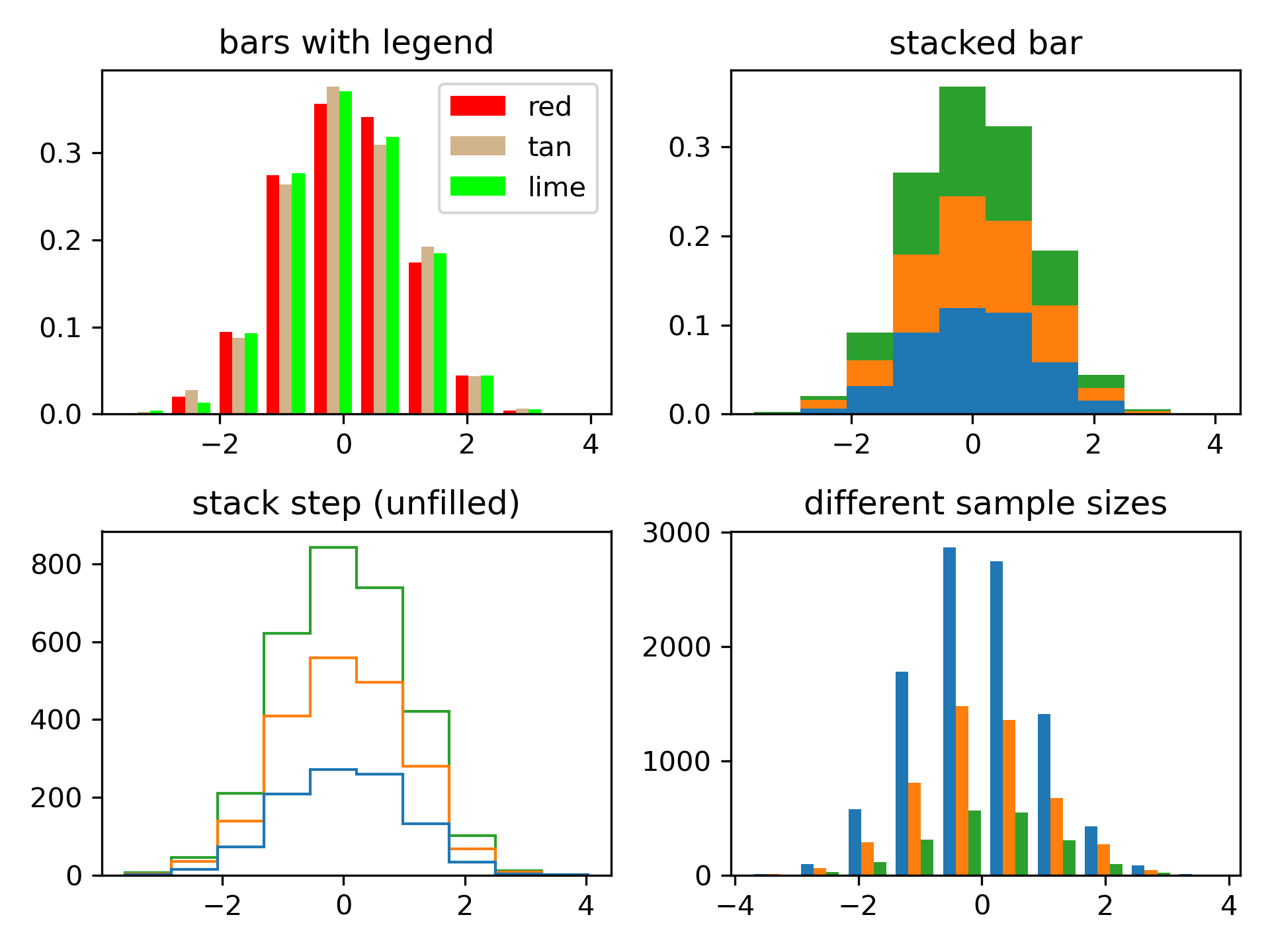>>> """
=====================================================
The histogram (hist) function with multiple data sets
=====================================================
Plot histogram with multiple sample sets and demonstrate:
* Use of legend with multiple sample sets
* Stacked bars
* Step curve with no fill
* Data sets of different sample sizes
Selecting different bin counts and sizes can significantly affect the
shape of a histogram. The Astropy docs have a great section on how to
select these parameters:
http://docs.astropy.org/en/stable/visualization/histogram.html
"""
...
... import numpy as np
... import matplotlib.pyplot as plt
...
... np.random.seed(19680801)
...
... n_bins = 10
... x = np.random.randn(1000, 3)
...
... fig, ((ax0, ax1), (ax2, ax3)) = plt.subplots(nrows=2, ncols=2)
...
... colors = ['red', 'tan', 'lime']
... ax0.hist(x, n_bins, density=True, histtype='bar', color=colors, label=colors)
... ax0.legend(prop={'size': 10})
... ax0.set_title('bars with legend')
...
... ax1.hist(x, n_bins, density=True, histtype='bar', stacked=True)
... ax1.set_title('stacked bar')
...
... ax2.hist(x, n_bins, histtype='step', stacked=True, fill=False)
... ax2.set_title('stack step (unfilled)')
...
... # Make a multiple-histogram of data-sets with different length.
... x_multi = [np.random.randn(n) for n in [10000, 5000, 2000]]
... ax3.hist(x_multi, n_bins, histtype='bar')
... ax3.set_title('different sample sizes')
...
... fig.tight_layout()
... plt.show()
...
... #############################################################################
... #
... # .. admonition:: References
... #
... # The use of the following functions, methods, classes and modules is shown
... # in this example:
... #
... # - `matplotlib.axes.Axes.hist` / `matplotlib.pyplot.hist`
...

